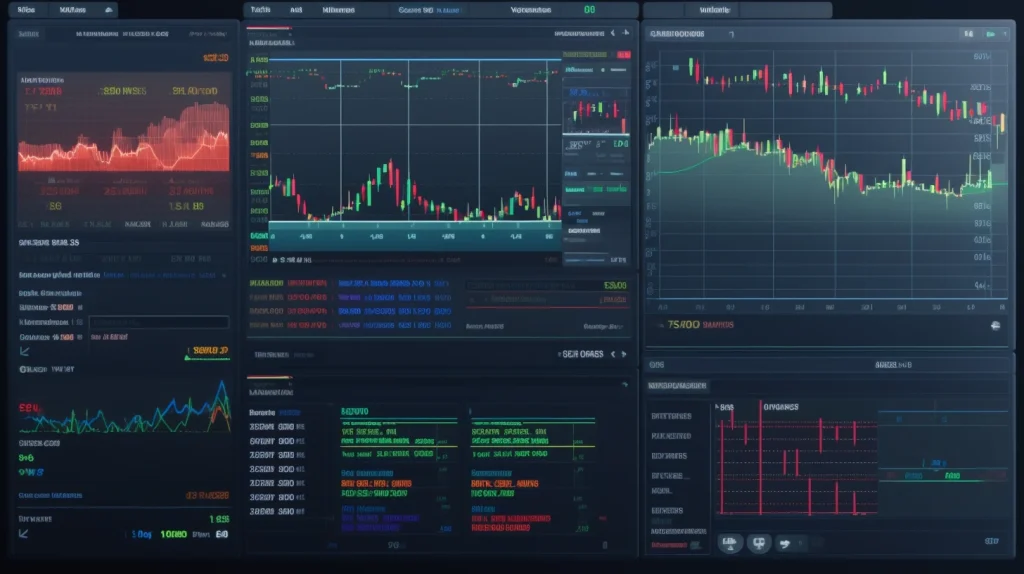Systematic trading refers to a strategy where traders follow a specific set of rules developed from a proven and back-tested model. The appeal of systematic trading lies in its disciplined, emotion-free, and potentially profitable approach. This article will offer guidance on developing rule-based trading systems, utilizing specific examples, insights, and case studies.
The Basics of Developing Rule-Based Trading Systems
When developing rule-based trading systems, traders must first define their trading rules. For instance, one might stipulate buying when a stock’s 50-day moving average crosses above the 200-day moving average. This rule aims to identify upward trends, prompting traders to buy. Conversely, selling occurs when the 50-day moving average drops below the 200-day moving average, signaling a potential downward trend.
Once rules are defined, the next step in developing rule-based trading systems is back-testing, which involves applying these rules to historical market data to evaluate their performance. To illustrate, let’s consider a hypothetical case study of a trader named Sam.
Case Study: Sam’s Rule-Based Trading System
Sam developed a system based on the rules mentioned above. In addition, he decided to invest 10% of his portfolio each time his system gave a buy signal. After back-testing his system on 20 years of stock market data, Sam found that his system returned an average annual profit of 8%.
With this information in hand, Sam decided to implement his system. Over the next year, he followed his rules diligently, resisting the urge to deviate even during market volatility. Ultimately, Sam’s systematic trading approach yielded a profit, proving the effectiveness of a well-designed and strictly followed rule-based trading system.
Implementing Rule-Based Trading Systems
After developing rule-based trading systems and confirming their effectiveness through back-testing, the next phase involves implementing them in real-time trading. This phase requires diligence and discipline to avoid deviating from the rules due to market fluctuations or emotional bias.
One key aspect of implementing these systems is portfolio management. For instance, if your system gives you a buy signal for a specific stock, you should decide how much of your portfolio to invest. To manage risk, a common rule of thumb is to limit any single investment to a small percentage of your portfolio, like 2%.
Moreover, effective implementation also involves ongoing monitoring and adjustment of your system. It’s crucial to track the performance of your system over time and tweak your rules if necessary. However, these adjustments should be based on logical reasoning and back-testing, not knee-jerk reactions to temporary market shifts.

The Benefits of Rule-Based Trading Systems
Developing and implementing rule-based trading systems can bring numerous benefits. First, it mitigates the emotional aspects of trading decisions, which can often lead to poor judgement and losses. Second, it provides a structured approach to investment, reducing guesswork and enabling more consistent returns.
Moreover, once established, these systems can often be automated. Many platforms now offer automation features that execute trades based on predefined rules, eliminating the need for manual intervention.
The Risks and How to Mitigate Them
While developing rule-based trading systems can offer substantial benefits, traders should also be aware of potential risks. One major risk is the tendency to “curve fit” during back-testing – creating a system that works excellently on historical data but poorly in real-life trading. To mitigate this, traders should ensure their systems are robust and not overly complicated, incorporating a variety of market conditions into their back-testing.
In conclusion, systematic trading, when done correctly, can yield significant returns. By understanding the principles of developing rule-based trading systems and carefully implementing them, traders can potentially improve their investment outcomes. With discipline, diligence, and continual learning, rule-based trading systems can be a potent tool.
Case Study: Limitations and Success in Rule-Based Trading Systems
Even with a strategic approach to developing rule-based trading systems, there can be unexpected limitations. Consider the case of a forex trader, Lisa. She implemented a rule-based system predicated on currency pairs’ daily moving averages. During back-testing, the system seemed effective. However, when implemented, the system didn’t yield the expected results due to the market’s evolving volatility.
This setback didn’t discourage Lisa. Instead, she revised her rules, incorporating volatility indicators to better adapt to market changes. Her persistence paid off. After tweaking her system and back-testing it once again, Lisa’s revised rule-based trading system began generating more consistent results, demonstrating the necessity of adaptability and continuous refinement in rule-based trading.
The Importance of Emotional Discipline
It’s worth noting that the road to successful systematic trading isn’t always smooth. Developing and implementing rule-based trading systems requires emotional discipline. This means sticking to your rules even when market movements might trigger fear or greed.
Successful traders know the importance of not letting emotions cloud their judgement. They trust the rules they’ve established and back-tested. It’s this discipline that sets them apart and makes rule-based trading systems effective.
Incorporating Diversification into Your System
Another crucial factor when developing rule-based trading systems is diversification. Diversification can spread risk across multiple trades or asset classes. It can protect against unexpected market movements impacting your entire portfolio.
Imagine you have a rule to invest in tech stocks when specific indicators align. However, if the entire tech sector experiences a downturn, your portfolio could be severely impacted. By diversifying your rules to include different sectors or even asset classes, you can better guard your portfolio against such risks.
The Role of Technology in Rule-Based Trading Systems



In the era of digital technology, automation plays a crucial role in implementing rule-based trading systems. Various trading platforms now offer features that automatically execute trades based on your predetermined rules. By taking advantage of these features, you can minimize the time and effort spent on trading while still adhering to your system.
Consider the example of a day trader, Tim. He had a job alongside his interest in day trading, which limited his trading hours. By incorporating automation into his rule-based system, Tim was able to execute trades while working, thus expanding his trading opportunities without sacrificing his job.
Evaluating the Performance of Rule-Based Trading Systems
Evaluating the performance of your rule-based trading system is a critical step in ensuring its long-term effectiveness. This means regularly reviewing your system’s performance and identifying any areas of improvement.
Performance metrics to consider include the percentage of successful trades, the average profit per trade, and the maximum drawdown (the largest drop from a peak in the value of your portfolio). Regularly monitoring these metrics will allow you to fine-tune your system and ensure it continues to be effective.
The Long-Term Sustainability of Rule-Based Trading Systems
Lastly, it’s worth noting that rule-based trading systems can provide long-term sustainability in trading. They offer a repeatable process that can be utilized over the long run, and they help traders stay disciplined, especially during times of market uncertainty.
In closing, rule-based trading systems can provide a strategic, systematic, and disciplined approach to trading, allowing traders to navigate the unpredictable world of trading with more confidence and potential success. So, whether you’re a seasoned trader or just starting, consider developing a rule-based trading system – it could be your roadmap to trading success.
In Conclusion: A Structured Path to Trading Success
In summary, developing and implementing rule-based trading systems offers traders a structured, disciplined, and potentially successful approach to navigate the often unpredictable world of trading. By sticking to well-designed rules, rigorously back-testing them, and demonstrating emotional discipline, traders can significantly improve their prospects.
Furthermore, while rule-based trading systems can provide a solid foundation, traders should remain adaptable, continuously learning and refining their systems in response to market dynamics. The markets are in constant flux, and successful systematic trading requires the ability to evolve with them.
So, remember, the path to trading success may not be straightforward, but with systematic trading, you have a map. By developing rule-based trading systems and diligently following them, you can potentially carve your own path to success in the world of trading.










